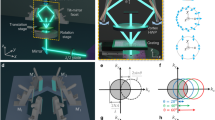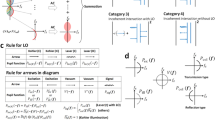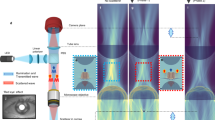Abstract
M. G. FOUSSERAU describes, in the Journal de Physique for October, a simple apparatus for viewing diffraction and interference phenomena, a modified form of which I have experimented on with success. In the latter form, the source of light was obtained by placing a diaphragm on the stage of a microscope, on which sunlight was concentrated by means of the mirror and condenser, and the diffraction effects were produced by placing perforated pieces of tinfoil on the top of the microscope tube where the eye-piece is usually placed. On placing the eye close up to the tiny hole in the tinfoil, various diffraction patterns were seen. The difficulty Of piercing a hole that is truly circular in tinfoil made it hard to obtain perfect rings, bat the “failures” were often very interesting. A rectangular aperture was easily got by cutting slits in two pieces of tinfoil with a razor and placing one over the other with the slits at right-angles, while for a triangular aperture three strips of tinfoil placed so as to leave just a tiny triangle open gave good results.
This is a preview of subscription content, access via your institution
Access options
Subscribe to this journal
Receive 51 print issues and online access
$199.00 per year
only $3.90 per issue
Buy this article
- Purchase on SpringerLink
- Instant access to full article PDF
Prices may be subject to local taxes which are calculated during checkout
Similar content being viewed by others
Rights and permissions
About this article
Cite this article
BRYAN, G. A Simple Experiment in Diffraction . Nature 67, 80–81 (1902). https://doi.org/10.1038/067080c0
Issue date:
DOI: https://doi.org/10.1038/067080c0



